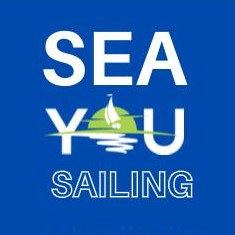first aid at sea
Medical assistance
It will all happen to us at some point, the question is what and when. An accident. Someone gets injured or ill and medical help is out of reach for the next few days. It doesn’t have to be a major or life-threatening situation and luckily it usually isn’t. A cut that needs stitching, a dislocated shoulder, that sort of things.
There are a few things I want to share with you. Things to keep in mind, things to prepare for, and ways to get other ways of getting medical help.
Things to keep in mind
First of all, make sure the location of your first aid kit is included in your safety briefing. It may be helpful to put a sticker to mark the location. Also make sure it is easily accessible;
Second, are you aware of any medical problems your crew might have? And if there are, what is or is not expected of you. Related to this, does your crew use (daily) medication and do you know where is it stored?
Note, if someone gets seasick (on the first day), it is possible that the medication has not kicked in before he/she might has to vomit. In the case of eg diabetes, this can be serious.
Last but not least: in case of, make sure you log any action you take, what drugs you may administer. That can be very important information to share if you need to contact a doctor later.
Things you can prepare for
First aid training! The regular first aid training will not help much at sea. Basically all you learn is call 112 or 911, not much more. And if you can’t expect medical help in an hour, you’re done.
There is however a medical training which is mandatory for professional seafarers (it is also mandatory for commercial approval of my Yachtmaster Ocean qualification). That is the ‘STCW training first aid and medical care‘.
There you will learn to stitch a wound, fix dislocated joints, treat injuries, administer medicines (antibiotics), do a full body examination and much more. I’ve done that training twice now I found the training extremely educational and rewarding.
While I haven’t had to use it in practice yet, I feel much more comfortable knowing how to handle when it comes down to it! Just google STCW medical first aid or STCW medical care for more information.
Learning what to do and how to do it also means you need to have the adequate medical equipment. You certainly have a thermometer, but do you also have a blood pressure monitor, an oximeter, needles, syringes, sets to stitch? And what about drugs like antibiotics, anesthetics? There’s a whole host of things you can think of. There is an extensive official mandatory list of medical equipment for ‘commercial’ seagoing vessels. I went over this list with my GP to decide what would be appropriate to have on board.
Other ways to get of medical assistance
“If you are on board a ship, anywhere in the world and you need to provide medical assistance to the sick and/or injured, or if you want advice about the care of a patient, you can contact the Koninklijke Nederlandse Redding Maatschappij / Koninklijke Nederlandse Redding Maatschappij Rescue Society (KNRM) Radio Medical Service (RMD/RMA) for free and ask for their help.”
That is the verbatim text in their brochure. On my ‘contactpage’ you can download the complete brochure, which explains in Dutch and English how they work and how you can contact them. Or go to: https://www.knrm.nl/images/_Algemeen-home/downloads/brochure_procedure_radio_medische_dienst.pdf
An important part of the procedure is the questionnaire that you have to fill in before contacting the RMA. You can find it on their website. You can also find it under downloads on my contactpage.
I also included the interactive Pro Forma’s I made to answer all the questions of the questionnaire. This way you can easily fill them in on your laptop or whatever and add them to an e-mail. You’ll also have them for your own log.
As you can see, all questions are coded with a number, so there’s no misunderstanding in communication with the RMA. The same kind of coding is also used for medical equipment and more importantly for any medication (including the dose) you may need to administer (in consultation with the RMA doctor. There is an extensive official mandatory list of medical equipment for ‘commercial’ seagoing vessels. You can also download that list on my contactpage.
Please note that it is your responsibility to have the appropriate skills to answer all questions on the questionnaire and take any actions that the RMA may ask you to do. You are also not allowed to administer medicines with the indication ‘RMA‘ without prior consultation/permission from the RMA doctor.
Last but not least: the RMA service is free of charge. Financially they are totally depending on private donations. Please join me to support their great service with a donation on https://actie.knrm.nl/donatie-2
STCW
Medical First Aid & Medical Care
The course Medical Care teaches you to adequately act to accidents and illnesses when no external medical support is available. The captain is initially responsible for this and should therefore be able to support the victim with medical support at any time.
* Certification: STCW (A-VI/4-1)
STCW (A-VI/4-2)
* Validation: 5 years
Course Content:
The content of this course consists of the following:
* general introduction shipping healthcare
* physical) examination according to a RMA-questionnaire
* vital functions check according to the SRABCDE model
* (infection) diseases and wound treatment on board according to ‘test’ victims
* injury to the human musculoskeletal system and neck injury
* basic Life Support
* transporting wounded
* evacuation per helicopter
* medical equipment on board
* medical administration and contacting Radio Medical Service
* administering injections
* administering IV
* stitching up a wound


